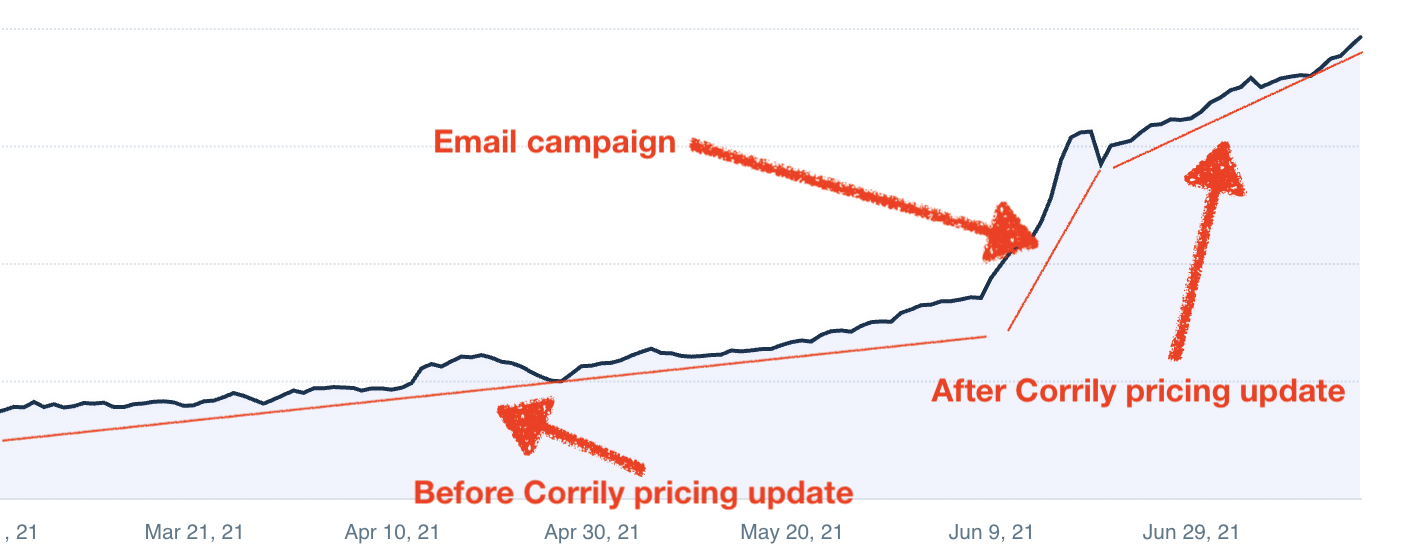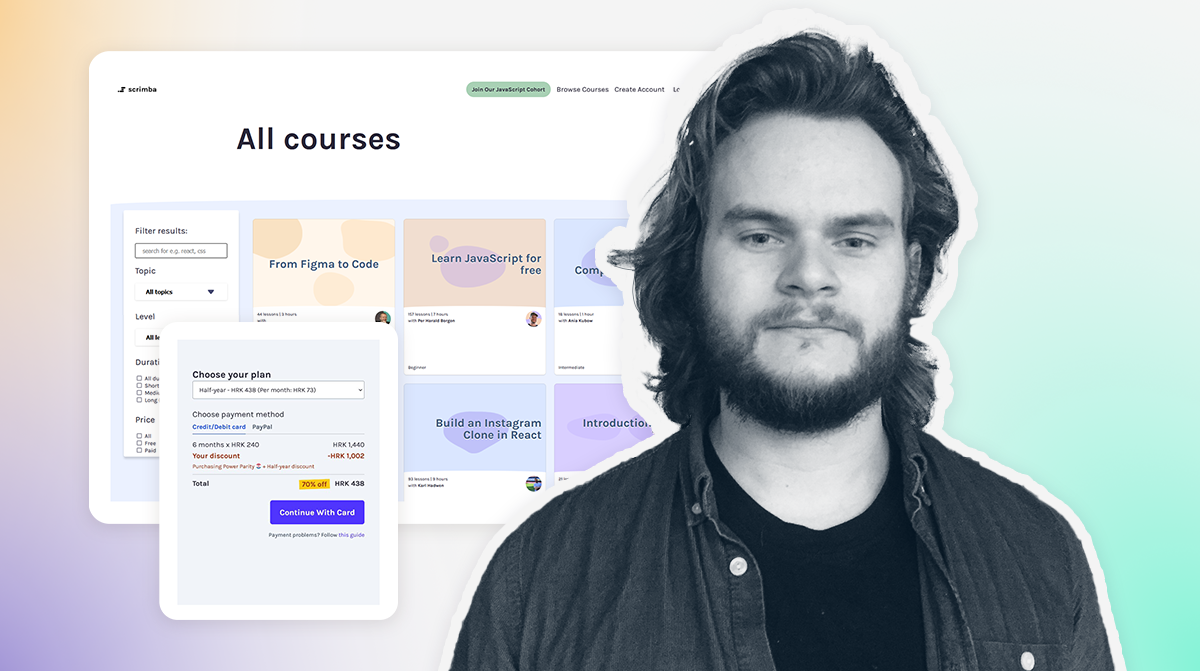Back in the days when Scrimba sold one-off courses, you implemented purchase power parity adjustments. What made you decide to do that?
When we started out, we priced our courses according to what we thought customers in the US and Western Europe would be willing to pay. However, we quickly realised that our pricing excluded a lot of other people in lower-income countries. We had, for example, a lot of people from India reaching out saying they wanted to buy our courses, but that they were too expensive. And with a product that had zero marginal cost, that also meant that we left money on the table. So it was a no-brainer for us to add purchase power parity. It’s a win-win. We increase our revenue, and our product becomes more accessible.
Could you talk about the process and the results that you saw from doing the purchase power parity adjustments?
The results were massive, we saw a 30% increase in revenue overnight. And that was with a very bareboned implementation that relied on incomplete data. We grouped countries into 10 different segments, and set a price for each of the groups. So not particularly fine-grained.
The process was also quite painful. First, we had to search for a bunch of data online, like the Big Mac index, and other purchasing power indexes. We also found a JavaScript package which contained some purchase power parity numbers, but none of them were complete. So we stitched together our own index based on various sources and our own knowledge about pricing levels in various countries. It was a cumbersome process.
But as I said, it worked really well. So we decided that this was something we were going to continue experimenting with. I started thinking about what a perfect solution would look like, where we would be able to adjust the price to every single country in the world, and also do country-specific experiments to find the right price point. However, I knew that this would take us a lot of time to build internally.
After you did that experiment, did you try other solutions?
No, we didn’t use any external solutions, it was all built in-house. But at that point, I was actively looking for companies that offered purchase power parity as a service. I found a few, but none that seemed suitable for our needs. However, it all changed when we met Corrily.
Were there any hesitations on your part before deciding to work with Corrily?
Yes, I was a bit hesitant about using a third party before I got to know Corrily. If I had found one that seemed good enough, it would have required a few meetings in order to gain enough trust with the company. I assumed that it also would require a technical investment on our side to integrate the solution, so we didn’t want to bet on a company that could be gone in 6 months.
How was Corrily able to get your trust throughout the process?
We met Corrily through YC, so that gave us some immediate trust. And when I told Corrily about my ideas for running price optimizations, I instantly noticed that my thinking around this was far too primitive and that Corrily was building a much more sophisticated model than what I ever could have managed to build in-house. So it was a no-brainer.
Plus, the speed of execution has been very impressive. So I trust that Corrily will continue pushing the envelope and that their offering will continue to be market-leading when it comes to purchasing power parity.
Get a simple PDF to read this interview later.Did you ever have any concerns about how your customers would be impacted by doing the price changes?
We did fear that users would be angry at us for differentiating prices between countries, so we were a bit hesitant announcing it. However, it turned out to be exactly the opposite. People actually really appreciate it. We get emails from customers saying, “thank you for doing price power parity. It's so nice of you.” So now, we’d rather brag of our purchasing power parity than try to hide it. Like, yeah, we are doing purchase power parity.
Another worry was that we’d end up with too high prices. This is because pricing is a core part of the Scrimba offering, we aim to offer the same value as a coding bootcamp but for roughly the price of a gym membership. So we need to make sure that we keep our prices at an affordable level, even though our testing might show that we should increase prices to increase revenue. But we solved that by setting an upper limit to the price.
How do you see price differentiation in different countries from a moral perspective and what does fairness mean to you?
I definitely think pricing differentiation is an important thing to do morally, as it makes your product accessible in low-income countries. The alternative is usually to charge the American price for all customers all over the world. Which would be unfair to people in low-income countries or would be very unfortunate for them.

If you had any message to give to people considering using Corrily, what would it be?
I would simply point to the numbers, as they speak for themselves. We've seen a 50% increase in revenue when we have optimized our prices on a country-to-country basis using Corrily. So it is a no-brainer. There's hardly anything you can do which takes less effort and gives you more bang for the buck.
It's also very last century to have one price for a product. With software, you have unlimited copies available, so you shouldn’t price based upon the production cost plus a margin. You should price it based on the value you provide to your customers. And that value will differ based upon their financial situation. People who have less to spend should be offered a more reasonable price. Good for them and good for your revenue.
Growing your revenue by 50% can make or break your business. Because then you suddenly can hire more people to make your product even better. So this has second-order effects.


